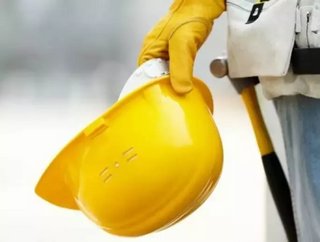Top Five Hazards in the Construction Industry

by Krissa Cavouras
As Editor of the MySafetySign Blog, I’m able to have robust and dynamic conversations with people working in construction health and safety through our flagship series, HazardSpotting.
Over the last year, we’ve been regularly featuring construction jobsites and the hazards they present, as well as discussing the important ways to resolve these hazards, so we’ve developed our own top five most prevalent hazards in the construction industry to share with you.
#1 Falls
Falls alone constituted 36 percent of all deaths in the construction industry in 2012, and that’s just the fatality count; serious injury from falls are also common.
In fact, they’re such a recurring problem that OSHA has declared a National Safety Stand-Down for June 2-6, 2014, where companies are encouraged to down tools and lead their employees through some refreshers on the prevalence of fall hazards, and the importance of protective measures.
In our experience, many of the fall hazards that present themselves on construction sites can seem safe because they’re brief exposures to height, or routine processes. Ascending or descending via scaffolds without using personal protective equipment is a common infraction, or working on flat roof that can seem deceptively safe until the work requires being near the leading edge.
In this photo, spotted from our offices and reported immediately to the local worksite authority, you can see a maintenance worker lowering his body over the edge of a roof without any fall protection at all, and with no one else with him to supervise the work, or remind him not to treat his personal safety so carelessly!
#2 Scaffolding
We have seen every kind of unsafe scaffold you can imagine. And while OSHA has pretty strict guidelines on who can assemble, supervise, and maintain a scaffolding system, jobsites will often use or re-use unsafe planks, allowing cluttered walkways which can lead to slips and trips, and fail to properly anchor suspended scaffolds.
Scaffolds are incredibly common environments on jobsites, particularly new build or renovation building construction, and these shortcuts and half-baked measures are responsible for structural failures or worker accidents on and around scaffolds.
We got a tip for one scaffolding no-no that illustrates perfectly the dangers of shortcuts. This worker was using an aluminum stage suspended between two upright ladders to do mason work- without fall protection!
Temporary scaffolds like these are the most hazardous because they lack the guard rails and fixed points that you find on permanent scaffold systems. Plus, we doubt there was a competent person present to certify this scaffolding safe for use.
#3 Personal Protective Equipment
It’s almost as predictable as clockwork -- take a quick look at any given construction site, and someone isn’t wearing a hard hat (or has it on backwards), someone is using a bandana in place of a face mask, and someone else has left their hi-vis vest at home. The PPE required by law can sometimes be uncomfortable, cumbersome, and easy to neglect.
But so many worksite accidents are made worse, or fatal, when PPE is ignored or misused.
Eye and face protection can prevent blindings, face shields and respirators can protect against the incredibly harmful dangers of silica dust, and hard hats are crucial in mitigating the risk of many struck-by incidents, which are the second deadliest worksite accidents.
Sometimes, as you can see in this photo submitted by a tipster to our HazardSpotting series, there’s multiple failures of PPE -- in this case, our workers are missing their hardhats and eye protection.
#4 Heatstroke
It’s hard to imagine this as we come out of one of the most severe winters North America has seen in a long time, but heat stress is a serious, and often overlooked, hazard on construction sites in the summer months.
With heat stroke, the most severe heat-induced illness, the body temperature can rise to 106 degrees in a matter of minutes and can be fatal if ignored. Staying hydrated, providing shelter from the sun, and taking frequent breaks are all important ways for employers and jobsite bosses to prevent heat stroke on construction sites.
#5 Overwork and stress
While this hazard isn’t always visible at your typical worksite, stress is a growing concern among health and safety experts, and the construction industry is no exception. In fact, we conducted a survey of health and safety professionals recently - our respondents included professionals from the manufacturing, energy and water, and construction sectors - and all of them indicated stress and overwork are the most overlooked hazards in their industries.
Stress can be caused by unsafe conditions or dangerous practices, but can also be a result of psychosocial factors like bullying, intimidation, and a negative workplace culture.
Construction sites can be some of the most high-hazard, high-tension workplaces in the country, so we wouldn’t be surprised the trend we’ve seen, that these issues are considered 'overlooked', put them on OSHA’s radar soon enough.
Krissa Cavouras is a knowledge manager at MySafetySign.com and the Editor of the MySafetySign Blog, which monitors trends and regulations in the health & safety industry, from major construction jobsites to your own home renovation. She’s committed to getting the job done safely!
- How to ensure your construction site is safe during winterEPC
- Balfour Beatty to adopt HSE app across 60 UK projectsDigital Construction
- Mental Health Awareness Week: A spotlight on the construction industryBuilt Environment
- How a good construction safety program can save livesFacilities Management






